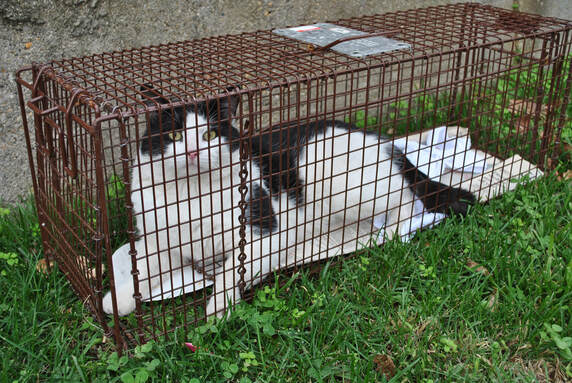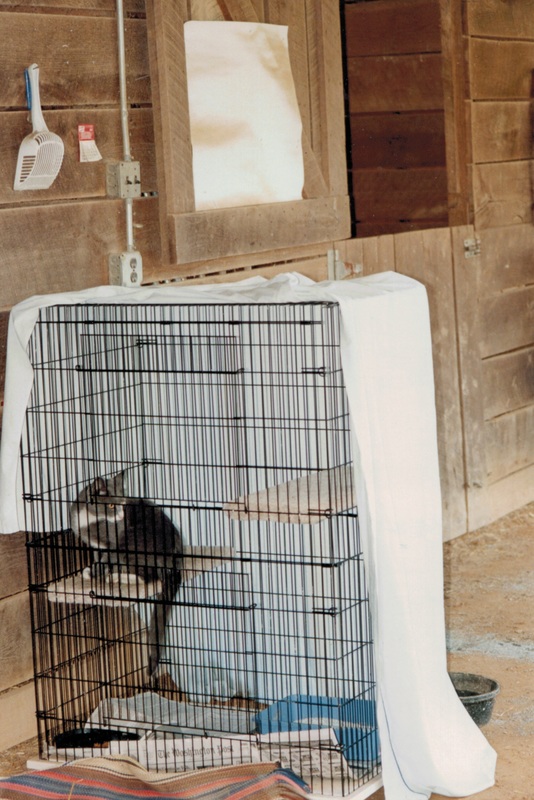Guidelines for Safely Relocating Feral Cats

Finding a new outdoor home for working cats
Farm homes, horse stables or similar make the best places for relocating feral cats. Feral cats can even be relocated to a backyard, especially one in a suburb.
Make absolutely sure that the new home checks out before relocation. The new caretaker must be interested in providing a good home. The cats need daily food and water. People must agree to provide basic needs, including veterinary care if necessary, and sign an adoption contract (agreement) similar to one used for domestic cat placements.
Some NPOs and shelters can help with relocation through their Working Cat Programs.
Tips for Safe Relocation All cats from colonies should be relocated in pairs. They have usually bonded with one another and the move will be less traumatic if they are not alone.
Cats need to be confined initially in their new home for at least two to three weeks in order to familiarize them with their new environment this will help ensure they will remain on the premises.
Confinement
Daily Care
Additional Notes
Farm homes, horse stables or similar make the best places for relocating feral cats. Feral cats can even be relocated to a backyard, especially one in a suburb.
Make absolutely sure that the new home checks out before relocation. The new caretaker must be interested in providing a good home. The cats need daily food and water. People must agree to provide basic needs, including veterinary care if necessary, and sign an adoption contract (agreement) similar to one used for domestic cat placements.
Some NPOs and shelters can help with relocation through their Working Cat Programs.
Tips for Safe Relocation All cats from colonies should be relocated in pairs. They have usually bonded with one another and the move will be less traumatic if they are not alone.
Cats need to be confined initially in their new home for at least two to three weeks in order to familiarize them with their new environment this will help ensure they will remain on the premises.
Confinement
- During the confinement period, it is also important for the new caretaker to make contact with the cats by talking to them. This will help them get used to human voices. It is noted that people who make the effort to communicate with the cats are also those who have the most successful relocations.
- Some people see confinement as cruel, but a short confinement period is a very necessary part of any relocation project. This will give the cats time to get accustomed to new sights, sounds, and smells; they will learn that the new caretaker provides food, water, and a warm, safe place to sleep.
- A large crate or cage should be used for confinement. Be skeptical if you are told that the new barn is completely cat-proof and that the cats will not escape. There are few barns that are really escape-proof. Always take cages/playpens, litter boxes, and food/water dishes with you just in case. Make sure the confinement area is located near a place where the cats can hide once they are allowed out of the playpen. They will likely run and hide when first released.
- Safe confinement areas may include a tack room, empty stall, garage or other enclosed area. The confinement area should be part of the cat’s future territory. Make sure the confinement area it is not too hot or cold.
- You can relocate new cats into an already established group. Introduce them slowly, as you would any new cat into a home or barn. In a group setting, confine the new cats to a cat playpen in an area where the established cats sleep and eat. Make sure the playpen is out of the weather and the cats are not exposed to harsh elements.
- If a cat does escape from confinement, set food and water out and sprinkle her used litter (for scent) around the barn. Cats often hide for a period of time but will stay in the area. Leave them plenty of food and water to prevent them from leaving in search of food.
Daily Care
- Cats must receive fresh food and water daily. Hungry cats do not make good mousers.
- Feed the cats regularly and at the same time each day. This will allow them to get used to the location and time that they will receive food once they are roaming free.
- Keep putting the food and water out for the cat after you have released them, even if you do not see them for a few days. They are likely to be hiding, but will come out for food and water when they are comfortable.
- Continue feeding them in the same place so they will know where to find their food. If you want to move the food dish, move it towards the new location gradually.
- To prevent wildlife and rodents from eating the cats’ food, we suggest you feeding the cats twice a day at set times and remove the food an hour after mealtime.
- The cat must have a litter box (you’ll need to clean this daily), a box to hide in and clean bedding or straw in the confinement area.
- Once the cats are released, they will still need access to a safe elimination spotーwhether this is outdoors or a regularly-cleaned litterbox.
Additional Notes
- Keep all veterinary records for updated rabies vaccines, annual de-worming, or flea treatments.
- Semi-feral cats may become more social after they have settled in, although some ferals may not be seen much.
- If you live in an area known for coyotes, please consider confining the cat to a safe, indoor area at night until she knows the area well enough to stay safe.
|
To ensure a successful and safe relocation, cats need to be confined in a cage like this for 2 to 3 weeks to ensure they get used to the new environment.
For more detailed information, see Chapter 8 of our Guide to Managing Community Cats
|

